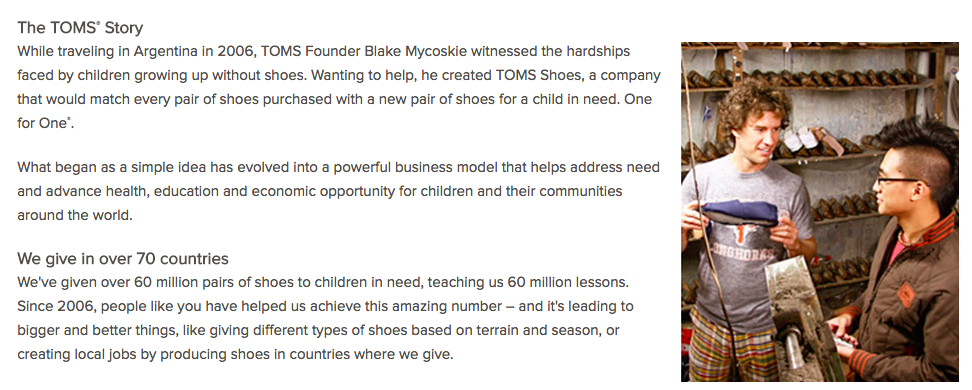No. 1: Knowing Your "Why"

What if there were one phrase that could align your team and organization, speed up decision-making, and make your business more successful?
Spoiler alert: There is! It’s your “why”: your company purpose, the deeper reason you’re doing what you’re doing, and the most important UX design competency.
Design that Goes Deeper
When the average person says “design,” they often mean style or aesthetic – how something looks. This is a normal association, but changing times call for changing definitions. Technology has disrupted design, leading to fragmentation of specialties, exponentially faster timelines, and higher demands from both users and businesses.
As a result, the role of a design professional has had to change too. No longer can a designer just create a product that looks pretty and call it a day. Pretty products may impress someone for a moment, but they don’t create lasting value.
Good aesthetic design is fleeting. It’s subjective. Trendy. Surface-level. Once a user digs a little deeper and sees that their needs aren’t fully met, or once their taste changes and they move on to the next trend, it’s over. A product or service must have value, not just vanity, to make a real, long-lasting impact.
Value comes from purpose. Consumers and employees have endless options for companies to do business with. A meaningful company mission — the deeper “why” behind their work — is the secret ingredient of winning them over.
A meaningful company mission — the deeper “why” behind their work — is the secret ingredient of winning over consumers and employees.
3 Ways the “Why” Helps You Win
More Motivated, Loyal Employees
Anyone who has ever tried to influence a child to do something knows the most common response: “Why?” Influencing employees and colleagues isn’t all that different. Humans need to know the reason behind requests and actions in order to fully understand and “buy in.”
A designer who’s given a task with no context or background is going to come up with a drastically different (and probably subpar) solution than one who is clear on the purpose and goal of the task.
Knowing the deeper “why” not only affects how employees approach individual tasks, but also their job as a whole. A company purpose attracts like-minded candidates, motivates their work on a daily basis, and makes them want to stay with the firm. In fact, Deloitte’s research shows that “‘mission-driven’ companies have 30 percent higher levels of innovation and 40 percent higher levels of retention, and they tend to be first or second in their market segment.”
Consider Nike. Yes, they make great shoes, but their goal is deeper than that: to bring inspiration and motivation to every athlete in the world (not just professional athletes, but anyone with a body). This purpose has attracted customers and employees alike. They’ve become a footwear and apparel leader, and were ranked #2 on CareerBliss’ list of companies with the happiest employees. Their “why” has helped them win.
A company purpose attracts like-minded candidates, motivates their work on a daily basis, and makes them want to stay with the firm.
More Motivated, Loyal Customers
Happy employees provide better service to customers, who also appreciate working with companies that have aspirations beyond just making money. The EY Beacon Institute pointed out in their research that “Purpose-led brands are more successful in acquiring and retaining customers. This may make intuitive sense, but it is also backed up by behavioral science: people buy things that make them feel good about themselves. And people do business with those they trust.”
Like Nike, TOMS has become a successful shoe brand because it strikes a chord with customers. The firm started with a simple idea: Every time a consumer buys a pair of TOMS shoes, they donate a pair to someone in need. This “One to One” model catapulted the company from a small startup to a $400 million giant with over 60 million customers and raving fans.
Source: TOMS
Happy employees provide better service to customers, who also appreciate working with companies that have aspirations beyond just making money.
Better Business Results
Loyal employees and loyal customers are a recipe for business success. Study after study proves it. Take recent research from EY and the Harvard Business Review, which shows the stark difference in growth between purpose-driven and non purpose-driven companies.
Source: Purpose at Work
These companies have a crystal-clear idea of their “why,” and they use it as a North Star to guide every product, every person, and every decision to success.
Happy employees provide better service to customers, who also appreciate working with companies that have aspirations beyond just making money.
What’s Your “Why”?
Being able to articulate your purpose is essential for motivating employees to build a meaningful experience and motivating customers to buy it. Whether you’re creating a company from the ground up or simply starting to work on a new experience or task, ask yourself these questions:
- Why are you creating this product / service / experience / feature?
- What problem will it solve?
- Have you ever experienced that problem yourself? If so, how did it feel? What benefits or results did you experience when that problem was solved?
- How will your solution improve the lives of your users or customers?
- How will it improve your business?
- What difference will it make in the world?
- Why should your users or customers care about it? What’s in it for them?
Once you have the answers to those questions, the next step is to use them to articulate your purpose statement, which will serve as the North Star for your UX projects. Curious how to do it? Stay tuned for our complete course on “Knowing Your Why” coming soon!
